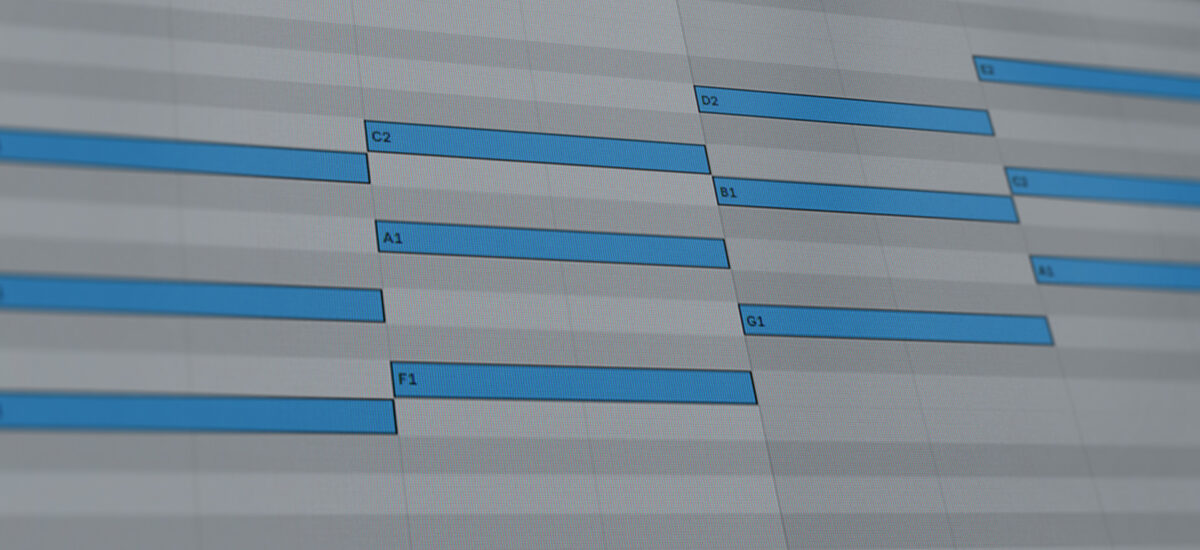
It’s hard to think of a genre of music more full of raw energy than rock. The emotional edge that is found in this kind of music is unmistakable. At the core of rock’s powerful, anthemic sound lie chord progressions that serve as the basis of the genre’s distinct atmosphere. Rock chord progressions can add a distinctive energy to your music whether that’s in the form of a simple yet effective power chord movement or a soulful ballad sequence.
So if you’re strumming a guitar in your garage, sampling rock music, or playing MIDI-rendered guitar with Kontakt, you’ll want to know these 5 rock chord progressions.
Jump to these sections:
- What chords are used in rock music?
- What is the best chord progression for rock music?
- 5 rock chord progressions to use in your songwriting
Follow along with Guitar Rig 7 Pro, a suite with with amps, pedals, and studio effects that will give you everything you need for a rock’n roll sound.
What chords are used in rock music?
If you already know your way around basic music theory, you should have an understanding of major and minor chords. Let’s refresh our memories so that we can easily recreate some common rock chord progressions.
We draw from scales when we make basic chords, selecting three notes to form what we refer to as a “triad.” A triad is made by choosing one note, skipping the next, and then using the one after that. To create triads, in other words, we use alternating notes from a scale.
For example, we have the following notes in the key of C major:

Let’s choose a note, and skip the next, repeating this process until the triad is made. Let’s do that by taking the first note (C), skipping the next note (D), and then using the note after that (E). If we do that again we skip F and use G. That leaves us with C (the first degree), E (the third degree), and G (the fifth degree) – a C major triad.
If we do that to every note from the scale we are left with these chords:
- I: C major
- ii: D minor
- iii: E minor
- IV: F major
- V: G major
- vi: A minor
- vii°: B diminished

In music theory, you’ll commonly see chords referred to as their Roman numeral. This makes it easy for us to use the same concepts in different keys. For example, a I chord in C major is C major. But a I chord in D major is D major. To take that a step further, a V chord in C major is G major, whereas a V chord in D major is A major. Shifting the same relative pitches from one key to another is called “transposition.”
All of these types of chords are used in rock music. But there is also another, simpler type of chord used in rock chord progressions. It is called a “power chord.”
Power chords are similar to triads, but they only consist of two notes – the root, or first degree, as well as the fifth. We can make a power chord out of any triad by removing the third degree of that chord. If we take a C major (C, E, G) and remove the E – which is the third – we are left with a C power chord. Power chords are also sometimes referred to as “5” chords, like “C5”.
To hear the difference between a triad and a power chord, let’s listen to them side by side. Here is a C major chord:
And here is a C5 or C power chord:
So how does the absence of the third degree affect the way we hear this chord?
Rock music borrows concepts from blues music, which often incorporates an ambiguous third degree of the scale that switches between major and minor variations. By creating chords that lack the third totally, we are left with something that is tonally ambiguous and “powerful”. These chords have become idiosyncratic to rock music, and they contribute to the genre’s singular harmonic identity.
What is the best chord progression for rock music?
Rock is an umbrella term for a massive number of subgenres. What works in one of those might be less appropriate in another – it’s hard to say with certainty that indie rock chord progressions would work in the context of metal or new-wave and vice versa.
There are, however, several common rock progressions that do work in a variety of contexts. So while there isn’t a single “best” chord progression for rock music, there are a few progressions that you’ll hear across the subgenre spectrum.
5 rock chord progressions to use in your songwriting
With that foundational understanding of chords in mind, let’s look at some signature chord progressions found in rock music. Feel free to use either the triadic versions of these chords or their power chord counterparts in your own versions of these rock chord progressions. We’ll give examples in the key of C major or A minor.
1. vi-IV-I-V: A minor – F major – C major – G major
This sequence is popular across most genres of popular music, rock included.
The sense of momentum in this chord progression is palpable as the emotive quality shifts through its build-up and resolution. This is a versatile progression that can be used in anything from ballads to high-energy anthems.
You can hear it in “Numb” by Linkin Park:
2. I-III-IV-iv: C major – E major – F major – F minor
The I-III-IV-vi is a uniquely dynamic chord progression in the context of rock. The interplay between major and minor chords in this progression is what makes it so compelling.
Shifting between tonalities in every chord and borrowing chords from parallel modes add depth and dimension to this otherwise simple movement. This progression’s impact relies a lot on the third degree of each chord, so we recommend staying away from power chords on this one.
“Creep” by Radiohead features this progression:
3. i-III-VII-i: A minor – C major – G major – A minor
Another emotive and dramatic chord progression is the i-III-VII-i.
Shifting energy through the dark sound of the tonic minor chord into the brighter major chords gives this progression its signature sound.
“Bring Me To Life” by Evanescence utilizes this sequence:
4. I-V-IV-V: C major – G major – F major – G major
This is a quintessential major chord progression for the genre. It is a cornerstone for rock hits across subgenres and generations.
The simplicity of this sequence is what sets it apart. Its straightforward structure makes it a favorite amongst songwriters who create memorable hooks and uplifting melodies.
Hear it in action in “All The Small Things” by blink-182:
5. I-bVII-iii-I: C major – Bb major – E minor – C major
This progression packs a unique punch with its use of the bVII chord.
It is yet another progression that shifts through bright and dark chords subtly and interestingly – creating a dynamic sequence that can be used in many contexts.
“Gold On The Ceiling” by The Black Keys uses this progression to great effect:
Start using these chord progressions to add energy to your songs
A good songwriter should always have compelling chord progressions on hand. Now that you’ve got five essential rock chord progressions under your belt, you’re primed to write your next energetic and dynamic track. The chords are the first step of the process, so make sure you use Komplete Start and Guitar Rig Pro 7 to dial in the perfect tone and attitude for your rock tracks today.















